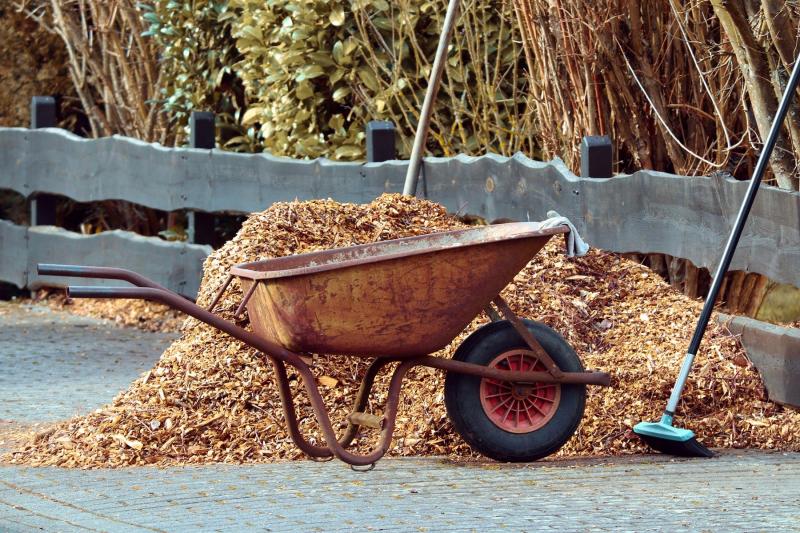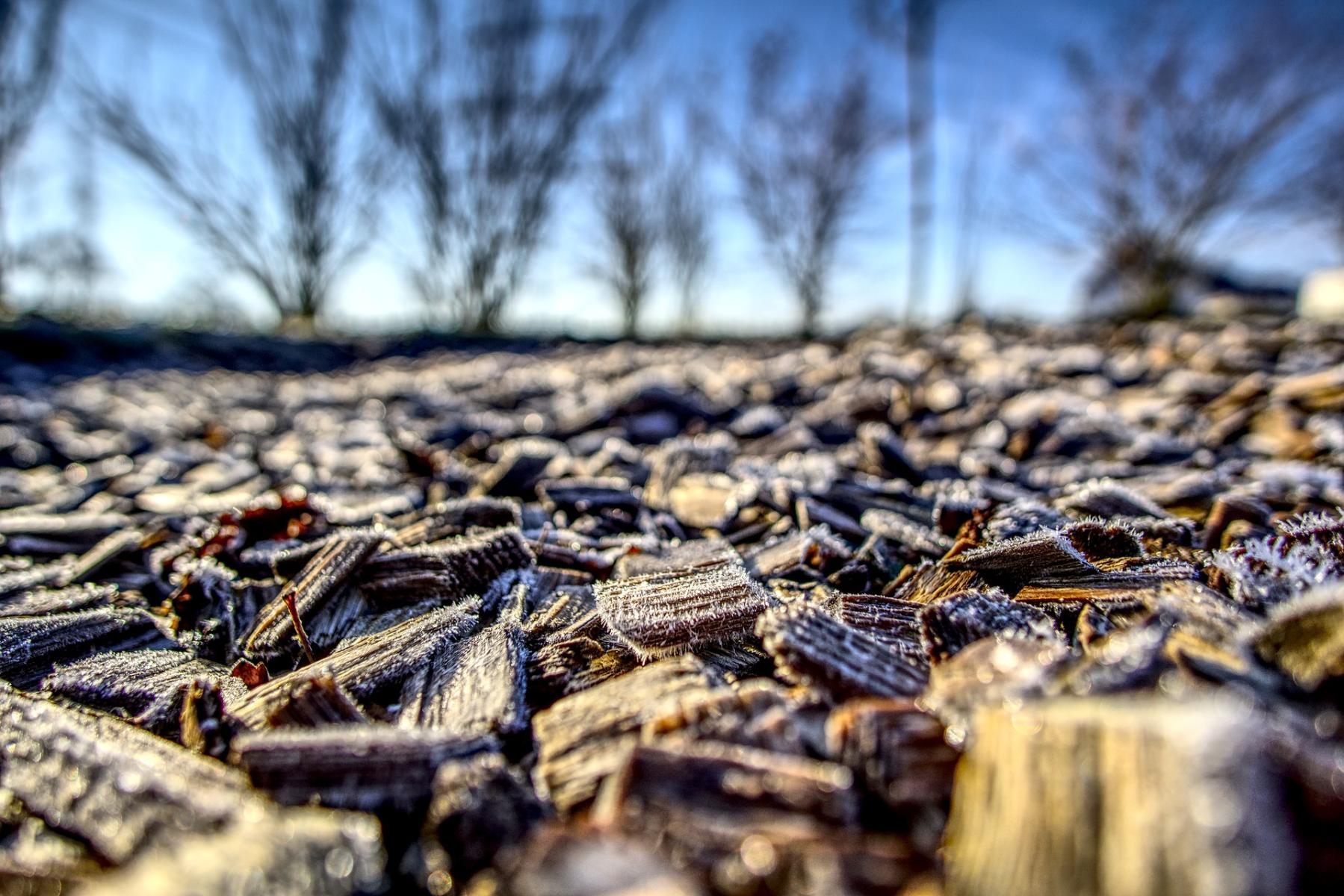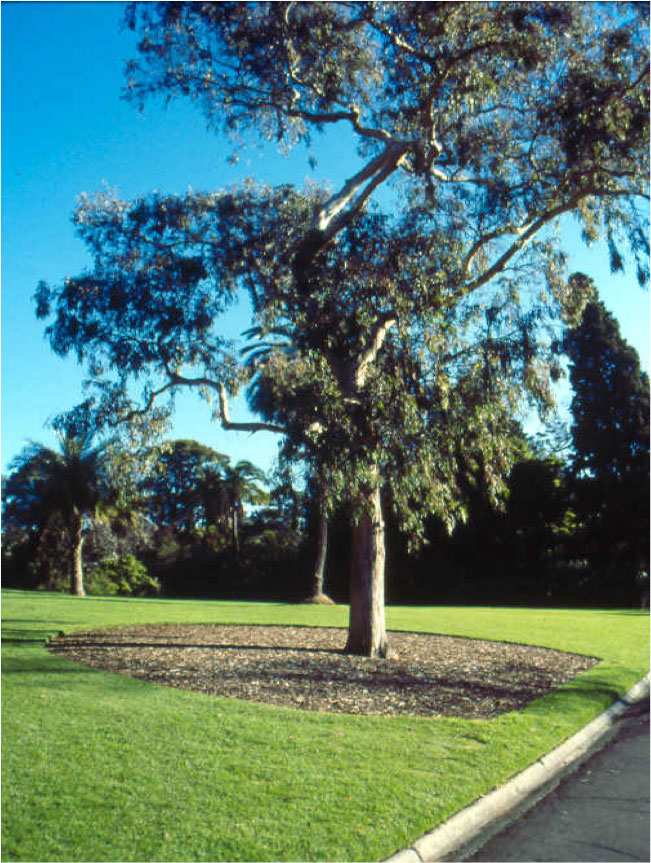
Every gardener knows that mulch is beneficial for their trees, shrubs and ornamental plantings, right? So how accurate is your mulch knowledge? Test yourself by answering the following true or false questions.
- Mulch is applied in the fall to keep the plant and the underlying ground warm.
- Plants that die during the winter are killed by cold temperatures.
- A one-inch layer of mulch is adequate for winter protection of most plants.
 Question #1
Question #1
The answer to question #1 is false. Mulch can be applied anytime in fall; some of it's biggest benefits to plants are moderation of soil temperatures and preventing soil temperature fluctuations during the winter. Plants can better tolerate soil that is continually cold or frozen than they do soil temperatures that fluctuate up and down throughout the winter.
In the past, is was often recommended mulch not be applied too soon in late summer, when soil temperatures are still warm. The theory was mulch would keep the underlying soil warm and delay the hardening-off process in landscape plants making them susceptible to damage from early winter freezing temperatures. Research has shown this is not true. Early fall mulch applications are not harmful to plants, so feel free to add or refresh mulch around your landscape plants anytime in fall it's convenient.
All trees, shrubs and perennials, especially those planted this summer or divided in fall, would benefit from a fall mulch application. But all plants grow better with a consistent mulch layer around them.
A layer of mulch about three inches thick is best. Good organic mulches include wood or bark chips, shredded bark, pine straw, evergreen boughs, clean straw or ground corncobs. Ideally mulch should not compact too easily. Tightly compacted mulch can obstruct water and air movement in the soil, which often happens when green grass clippings are used, and may result in poor water drainage and increased disease development, such as crown or root rots.
Question #2
The answer to question #2 is maybe. Newly planted trees, shrubs and perennials damaged or killed during winter are not usually injured directly by cold temperatures, but indirectly by frost heaving or desiccation. Frost heaving occurs when the soil alternately freezes and thaws, resulting in damage to the dormant crown and root system, and push plants or bulbs right up out of the soil. Frost heaving is reduced in plantings where an application of winter mulch is made, through its ability to reduce swings in soil temperatures.
Winter desiccation is a common type of winter injury that occurs when the amount of water lost by the foliage exceeds the amount picked up by the roots. Mulch holds moisture in the soil, minimizing the effects of dry winter conditions.
However, Nebraska is prone to large temperature swings in fall and spring. Only 7 days ago we were suffering through temperatures in the high 90s, now our days are 20+ degrees cooler in the mid 70s and nights are in the 50s. It's more damaging to plants when the drop goes suddenly into below freezing temperatures. Eastern parts of the state have experienced this in the fall of 2018, 2019 and spring 2020, and these occurrences were followed by plant damage and death.
 Question #3The answer to question #3 is false. Mulch should be applied at a depth of 3-4 inches. With fine organic mulches, such as compost or shredded leaves, maintain a 3-inch layer. For coarse materials, like wood chips, maintain a 4-inch layer. Remember a 4-inch layer will compact to 3 inches.
Question #3The answer to question #3 is false. Mulch should be applied at a depth of 3-4 inches. With fine organic mulches, such as compost or shredded leaves, maintain a 3-inch layer. For coarse materials, like wood chips, maintain a 4-inch layer. Remember a 4-inch layer will compact to 3 inches.
Don't exceed this recommended thickness, or pile mulch up around the base of trees. Excessively deep mulch provides excellently protected habitat for voles, which may eat the bark off your young trees in winter and will hold moisture against the bark of your tree which could lead to bark death.
In time, excess mulch often results in root growth into the mulch layer. Plants rooted in the mulch layer are more likely to experience winter and drought injury than those growing in soil, due to the poor water holding capacity of loose, non-compacted mulch.
If your landscape is in a windy exposed area, try using shredded hardwood mulch. The ragged edges of this mulch type knit together in time and hold in place better than bark or hardwood chips.
Mulch for Specific Plant Types
Roses - the goal of winterizing, or covering plants with mulch or rose cones, is to protect the graft union from freezing and thawing. The graft union is the place where the named variety, the flowering part, was grafted onto the rootstock. If that part isn't protected, the top part may be killed.
Strawberries - Though strawberries are vulnerable to frost heaving, they also need winter mulch to protect the flower buds that will become next year's fruit crop. Mulching protects the flower buds against temperatures below 15 degrees F, which can damage or kill them.
Mulch strawberries after plants stop growing. Applying mulch before growth stops may smother the crowns. You need to apply mulch before temperatures drop below 20 degrees F, however.
As the name suggests, one of the best mulches for strawberries is straw. Other possibilities are chopped cornstalks, hay, corn cobs and bark chips. Grass clippings and leaves are not recommended because they tend to form thick, smothering mats. Each bale of straw should cover an area about 10 by 10 feet to a depth of 3 to 5 inches.
Strawberry plants need to be uncovered as soon as they begin growing in the spring. Rake the mulch between the rows where it will be handy in case a freeze or frost warning makes it necessary to re-cover plants. After the danger of frost is past, it can be spread between rows for a summer mulch to help control weeds and slow the loss of moisture from the soil.
Perennial & Bulb Beds - Chopped leaves and compost are good because they insulate the beds but plants can push up through them in the spring. Bark chips are often used around trees and shrubs. Mulching to retain soil moisture is especially important around newly planted ornamentals, which tend to have limited root systems for the first year or two after planting. This makes them more susceptible to drought stress than established plants.
Trees - A properly mulched tree has mulch over the root zone but not lapping up against the trunk. Mulch piled around the trunk could provide cover for mice and enable them to gnaw on the bark and girdle the plant.
Mulches in flower beds and around landscape plants reduce the need to water and keeps lawn equipment at a distance. Injured bark on woody plants can give insects and disease organisms a place to invade.
Images
- Hardwood chips are a great organic mulch. Image from Pixabay.com.
- Apply mulch in a wide flat layer beneath the tree. Do not pile mulch up around a tree's trunk. Image by John Fech, Nebraska Extension.